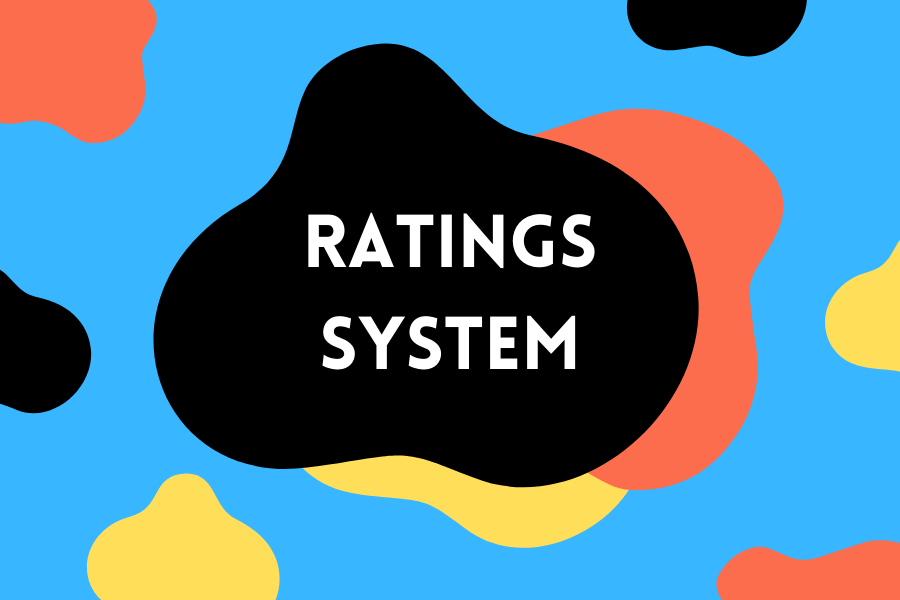Chances are you will never find out the definitive reason why School A accepted you, but not School B. That’s because colleges are notoriously secretive about their admissions process, partly to avoid publicizing information that could serve as the basis for an angry parent’s lawsuit.
However, the Students for Fair Admissions v. Harvard trial concerning affirmative action, a subject I briefly discussed in this section, prompted Harvard to submit documents including their admissions office’s reading procedures; we also have former Harvard senior admissions officer Chuck Hughes’ book. Moreover, the Family Educational Rights and Privacy Act allows students to view portions of their admissions file upon enrollment, which shows us that Harvard’s process is similar to those used by other prestigious schools such as Stanford, Yale and Vanderbilt. I’ll reiterate, of course, that I am not an admissions officer, but I believe these resources provide a helpful glimpse of holistic review in action.
To begin, your application is usually assigned to a primary reader, although the specifics vary at each school. Admissions officers typically divide the workload by geography, and you can look up the name and contact information for yours on the school’s admissions website. This person is incredibly important because they’re the one who will later present your application to their colleagues. Of the nearly 8 billion people on Earth, one individual wields inordinate power over your admissions decision. I mean it when I say there is an element of chance to this entire process.
Your admissions officer will read through all of your application materials and assign you ratings in various categories before determining an overall rating. This is the part where schools diverge a bit more, but the “sub-ratings” generally fall into one of three buckets. Harvard uses a 1-6 rating scale, with 1 being the best and a 2+ being better than a 2-. I would strongly recommend this article if you want an idea of what constitutes a 1, 2, 3 and so on.
Academic rating
- This rating mainly centers around your grades and course rigor, both of which are evaluated in the context of your high school. Is your GPA competitive given the grade distribution at your school? A 4.0 GPA at one school might not carry the same weight as a 4.0 at another. How challenging was your coursework relative to the available opportunities? Not every school offers the same number of AP courses, for example.
- To elaborate on the matter of course rigor, your counselor will complete a school report that includes a question about your high school course load. The aforementioned Hughes wrote that “almost all the students admitted to elite colleges will have taken a first (most demanding) or second tier (very demanding) academic program. Even at the ‘very demanding’ level of intensity, questions may arise as to why the applicant is not taking a more challenging academic program.” Make of this statement what you will. If you read the preceding sections, you already know my thoughts on the importance of a healthy school-life balance.
- See my section on test scores for a more detailed look at how they play into your ratings, as well as my advice regarding test-optional policies.
- If you have any other academic honors or accomplishments such as success at academic competitions or research experience, those would also factor into this rating.
Extracurricular rating
- This is a fairly straightforward rating. How involved were you in extracurricular activities? Do you have any extracurricular achievements at a local, regional, national or international level?
- See my section on the activities portion of the Common Application for more information.
Personal rating
- This is the most subjective rating, the one that assesses your character.
- What do your letters of recommendation say about you? Do your teachers and counselor refer to you as one of the best students they’ve ever had or do they describe you with relative indifference? Do they share specific stories that demonstrate your character or do they stick to vague generalizations? See my section on rec letters to know who to ask and how to ask them.
- If you interview with a school, typically through an alumni program, what did your interviewer say about you in their report? As a general note, interviews are rarely a major factor in admissions decisions. See my section on interviews for more information.
- Other relevant information such as overcoming personal or family hardship can affect your personal rating. I shouldn’t have to say this, but don’t fabricate a sob story because you think it’ll get you a higher personal rating. If you legitimately need me to explain why this is a terrible idea, I’m going to guess that your actual personal rating is low…very low.
- I’ll also include both your personal essay (click here for that section) and any supplemental essays (click here for that section) in this category. At Stanford, it’s widely assumed your essays are part of their mysterious SPIV rating (Self-Presentation and Intellectual Vitality is the consensus guess) while your letters of recommendation contribute to your “support rating.” Others, like Harvard, simply include your essays in their personal rating. Either way, your essays help shape the intangible sides of your application.
Now it’s time for the overall rating. There is no strict formula here; this isn’t just an average of your other ratings. This is where the art and science of college admissions intersect. Two admissions officers could read the exact same application and arrive at different conclusions. I won’t sugarcoat things: there are a lot of factors determining your admissions decision that you can’t control, some of which I haven’t even gotten to yet. It sounds cliché, but do your best and focus on what you can control.
It’s also worth noting the sheer volume of applications that must be read, especially when test-optional policies encourage students with low or no test scores to apply to elite schools as well.
“Admissions readers log long hours well into the evening and morning,” Hughes writes. “Unless there is a compelling reason to analyze or scrutinize an essay, admissions officers will spend two to three minutes at most reading the essay.”
Using his estimate for an essay, we can safely assume that the initial application read spans a matter of minutes. I mention this to make the point that your admissions officer simply doesn’t have the time to do much guesswork for you. To that end, presenting your extracurricular activities, essays, etc. in an easy-to-understand manner is advised.
A second and in some cases third reader may also examine your application at this stage. These specific details aren’t identical at each school, and they aren’t especially relevant as far as how you should go about preparing your application.
What happens next, however, is worth discussing further. As the Harvard Crimson reported, “the Class of 2023 reading procedures indicate that all applications with a 2- overall score or better should make it to the committee phase. The first reader decides on a case-by-case basis whether those who earn a 3+ will proceed, while those scoring a 3 or worse typically do not advance.”
From here, admissions offices utilize a chain of command to make their final decisions. Per Hughes, “most offices place the decision-making responsibility in the hands of committees that make recommendations to a larger body, in the presence of the dean and possibly faculty members. At Harvard, a majority vote of the approximately 35 members of the admissions committee is required for admission.” He goes on to explain that “every school has its own way of presenting cases for admission. In all of these cases, the primary admissions officer is required to determine the strongest candidates within schools and regions and be prepared to present and discuss his or her cases with the rest of the committee. The area admissions representative has the responsibility of knowing the quantitative and qualitative merits of the case, the strength of the curriculum and school system, the school application history and other pertinent factors that could sway committee opinion.”
A former admissions officer at the University of Chicago corroborates this insight. “Most applicants are read by multiple people before committee, so even if each reader reads quickly, the process is pretty thorough. Don’t obfuscate information, but otherwise we have a pretty good sense of an applicant by the end of the reading process. I worked remotely for UChicago so [I] only sat in on one committee. From what I saw, everyone gets copies of the application to read, but most people will just listen to the regional AO’s lobbying for an applicant and flip to relevant bits of info for or against an applicant, to see if they agree with the assessment.”
Let’s unpack what all of that means. Essentially, those who work more closely with your application are tasked with pitching you to the rest of the admissions office. This is where having a solid application narrative is key. Let’s say I’m the dean of admissions at Famous School University and you have five minutes to convince me you would be a valuable addition to our campus. Would you merely give me a bulleted list of accomplishments, or tie them together to create a complete picture of yourself? This is what admissions officers do. Your goal is to make them fight for you in committee; an effective application will practically write their sales pitch for them.
But as I alluded to earlier, you don’t control your own fate as much as you might hope. Jeffrey Selingo, author of “Who Gets in and Why: A Year Inside College Admissions,” said in an interview last year:
“It’s all about the college’s priorities and their agenda. It has nothing to do with you, the applicant. Colleges and universities have a class that they have to fill every year and they have a certain set of priorities to fill that class. They might want more kids from all 50 states, maybe they’re in the Southeast and they want more kids from the Northwest. They may need more ‘full-pay’ students [that won’t require financial aid]. Every college needs more men. Some of these priorities might be very narrow. They might need a third baseman for the baseball team, a piccolo player for the orchestra or somebody for the debate team. One of the things that I remind students is if a college has a 10% acceptance rate, that doesn’t mean you personally have a 10% chance of getting in. You might actually have a 90% chance of getting in if you’re really what they want, or you might have a 0% chance of getting in if you’re like every other applicant in that way.”
Unfortunately, us outsiders don’t know what a school’s exact needs are or what the rest of the applicant pool looks like for that specific year.
“The preliminary processes often approve more candidates for admission than the college can actually admit, sometimes by as many as several hundred students. In the last weeks of the process, these candidates are compared with the rest of the pool marked for admission,” Hughes wrote. “As the top candidates from Nepal are considered in the same context as a high-level ‘allrounder’ from Florida, a strong minority candidate from Harlem or an outstanding musician from San Francisco, some of the cases most at the edge will be moved to the Waiting List or be denied admission entirely.”
In other words, your story could very well be “good enough” in the eyes of an admissions office, but not the type of story that they’re looking for. I think the idea of letting college admissions dictate your sense of self-worth is toxic on principle. Then consider how many significant factors — all the way down to who reads your application and on what day they read it — have nothing to do with you. If you’re going to center your entire adolescent life around this process, I believe you should at least understand what happens after you click ‘submit’ on your application.





![Smiling in a sea of Longhorns, Fox 2 reporter Ty Hawkins joins junior Darren Young during the morning Oct. 3 pep rally. The last time West was featured in this segment was 2011. “[I hope people see this and think] if you come to [Parkway] West, you will have the time of your life because there are so many fun activities to do that make it feel like you belong here. I was surprised so many people attended, but it was a lot of fun,” Young said.](https://pwestpathfinder.com/wp-content/uploads/2025/10/Edited2-1200x798.jpg)

![Blue lights shining brightly, senior Riley Creely beatboxes into the microphone. Creely and the group began the performance in front of the blue lights, sparking interest from the audience. “The pep rally performance was fun. I got to beatbox for the first half of the song, which was hype. I liked to look into the student section [while I performed],” Creely said.](https://pwestpathfinder.com/wp-content/uploads/2025/09/DSC_5085-Enhanced-NR-1200x799.jpg)


![Hugging senior Ella Wheeler, senior Jamaya Love beams after scoring a touchdown at the Powderpuff football game on Sept. 11, putting the seniors on the scoreboard with a score of 6-2 above the juniors. The seniors went on to capture the victory with a final score of 12-2. “I was actually gassed [at this moment]. I was so tired. But, everyone on the sideline, all my teammates and everybody in the stands were cheering,” Love said.](https://pwestpathfinder.com/wp-content/uploads/2025/09/DSC1735-Enhanced-NR-2-1200x799.jpg)
![Raising her hands in the air, freshman Jillian Sternhagen follows Mr. Mooney’s lead during an activity Aug. 15 at freshman orientation. Surrounded by other freshmen, Sternhagen learned an “A O E day” chant to help remember their new weekly high school schedule. Students participated in several activities to get to know each other, the school and the upperclassmen. “We got to tour the school and learn where everything in our schedule is. The energy [at orientation] was fun; the leaders were peppy and got us excited,” Sternhagen said.](https://pwestpathfinder.com/wp-content/uploads/2025/08/DSC_0145-1200x798.jpg)
![Shifting global trade, President Donald Trump’s tariffs are raising concerns about economic stability for the U.S. and other countries alike. “[The tariffs are] going to pose a distinct challenge to the U.S. economy and a challenge to the global economy on the whole because it's going to greatly upset who trades with who and where resources and products are going to come from,” social studies teacher Melvin Trotier said.](https://pwestpathfinder.com/wp-content/uploads/2025/05/MDB_3456-1200x800.jpg)

